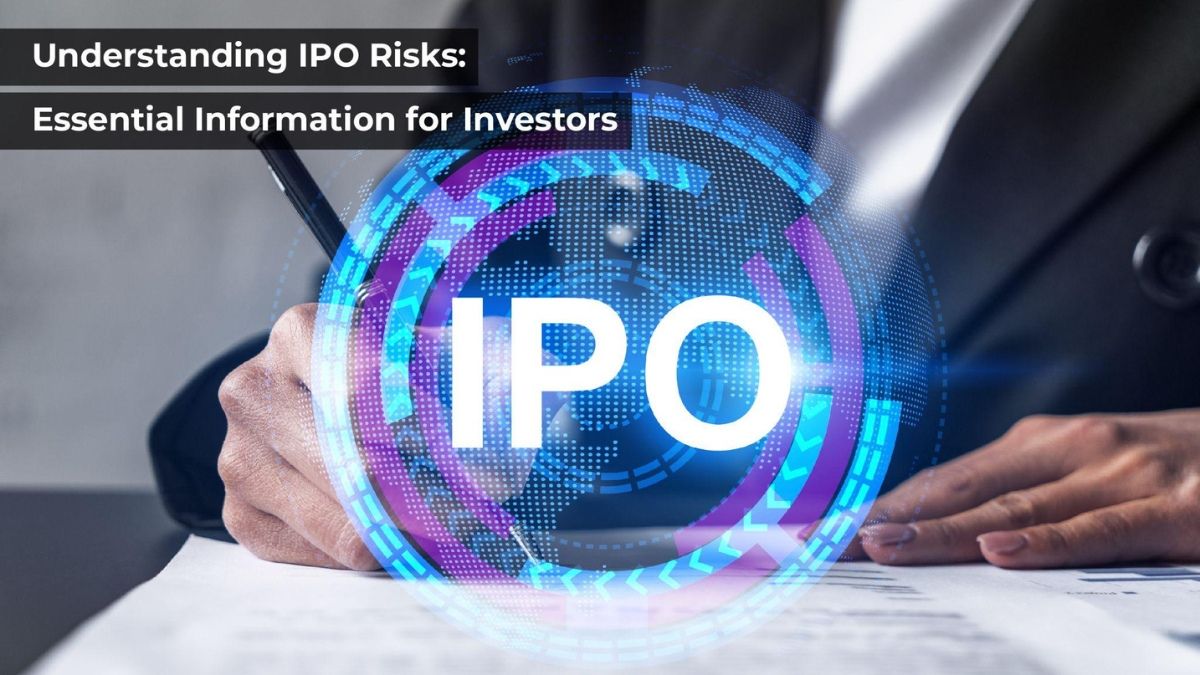
Investing in an IPO can be an exciting experience. Popular companies launch their IPOs, often becoming oversubscribed in hours. The appeal of IPOs goes beyond potential profits; for many investors, it’s also about securing bragging rights by obtaining shares in high-demand IPOs.
However, amidst the excitement and bidding, many overlook the risks involved in IPOs. It’s important to understand that receiving an IPO allotment does not guarantee success in the market. Several risks come with IPO investments. With tools like the HDFC Sky app, you can stay informed and make better decisions about IPO investments. This blog will help you understand these risks and how you can manage them.
Key Risks Associated with IPO Investment
India has seen both successful and unsuccessful IPOs. Based on lessons from past mishaps, here are some significant risks.
Market Volatility
Once IPO shares are listed on the stock market, they often face intense price fluctuations in the first days. Various factors cause these fluctuations, including share demand, market conditions, and early investors selling their shares. Many retail investors monitor these changes using a stock trading app to track real-time prices. However, these sudden shifts can lead to capital loss for new investors, making IPO investments risky.
Lack of Historical Data
With established public companies, investors can study years of data on profitability, stability, and growth. However, with IPOs, investors need more historical data. This lack of information makes investing in IPOs a leap of faith. Although companies release a Draft Red Herring Prospectus (DRHP) and a Red Herring Prospectus (RHP) with financial details, they need to provide a complete picture of long-term performance. Comparatively, exchange-traded funds (ETF) often offer diversified exposure with historical performance metrics, making them an alternative for cautious investors.
Underpricing and Oversubscription
Many companies intentionally underprice their shares to attract investors and ensure a successful IPO. This strategy often leads to oversubscription, where investor demand far exceeds the available shares. This drives up the share price when trading begins. For retail investors, this can mean missing out on shares at the IPO price and buying them at a premium instead. There’s no assurance that these shares will maintain their value, increasing the risk of capital loss. Be cautious of IPOs priced too low—they may be designed to create initial demand rather than long-term growth.
Lock-Up Periods
Key stakeholders like company owners and early investors are often subject to lock-up periods, preventing them from selling their shares immediately after the IPO. Once these lock-up periods end, significant selling by these early investors can cause large price drops, impacting retail investors. Understanding these lock-up periods is essential, as early stakeholders may decide to exit, potentially leading to price instability in the market.
Market Sentiment
Market sentiment, or investor mood, heavily influences share performance. A positive sentiment can boost share prices, while a negative sentiment can drive prices down. IPO shares, especially those with much public attention, are vulnerable to these mood swings. For retail investors, gauging market sentiment is critical, as it can significantly affect the initial performance of their shares.
Risk Factors Outlined in the Red Herring Prospectus (RHP)
The Red Herring Prospectus (RHP) issued by companies includes a list of risk factors. Here are some common risk categories that investors should pay close attention to:
Industry and Market Risks
Every industry faces unique challenges. For instance, regulatory changes or new technological advancements could affect a company’s growth. The RHP may address these risks, but they remain uncertainties for investors. Using an IPO app can provide quick access to key details, helping you research the industry before investing to understand how potential shifts might impact your investment.
Business-Specific Risks
Each company has unique risks related to its business model. These can include dependence on a flagship product, pending legal disputes, or management conflicts. Although RHPs list these risks, they might need to provide a complete picture. For example, internal conflicts often must be fully disclosed, leaving investors unaware of potential dangers.
Financial Risks
The RHP gives insights into the company’s debt and financial health. Before investing, please review this information to understand how the company plans to meet its debt obligations. Strong debt management is a good sign, while excessive debt or poor cash flow management can be red flags for investors.
Conclusion
IPOs are exciting, but there are a lot of dangers involved. You shouldn’t let the excitement of trying something new affect your judgement. Spend some time learning about and researching the concerns mentioned above. It’s important for retail investors to approach initial public offerings (IPOs) with a thorough awareness of the potential risks. You can make safer financial choices if you are aware of the risks.
With HDFC SKY, you can open demat account and invest seamlessly in stocks, mutual funds, and various other financial instruments like derivatives and commodities. HDFC SKY also offers research-based recommendations and expert market insights for intelligent decision-making.
